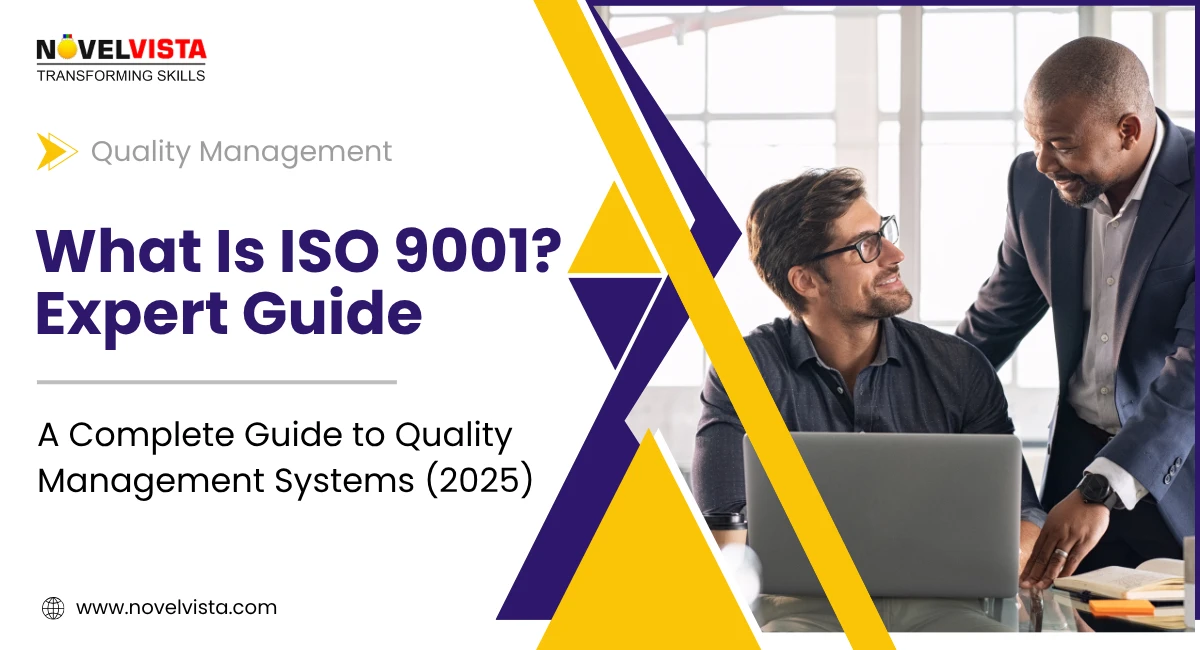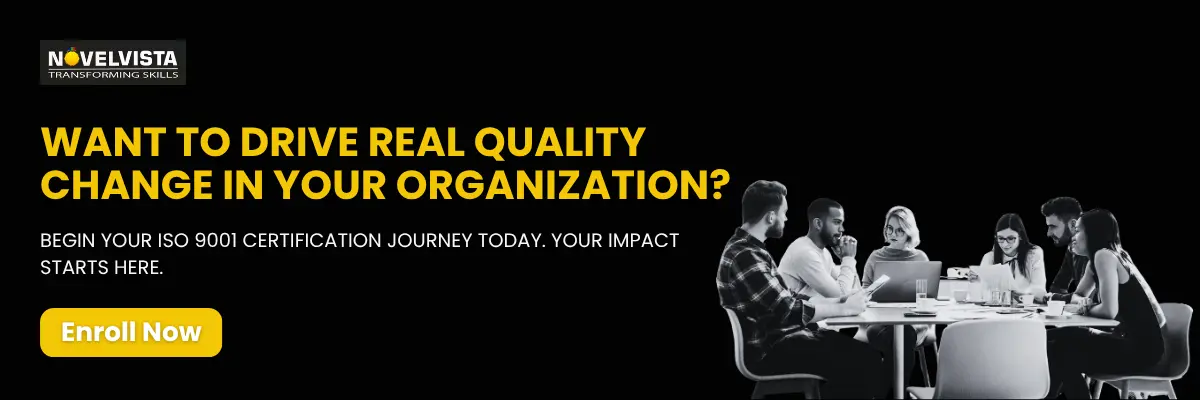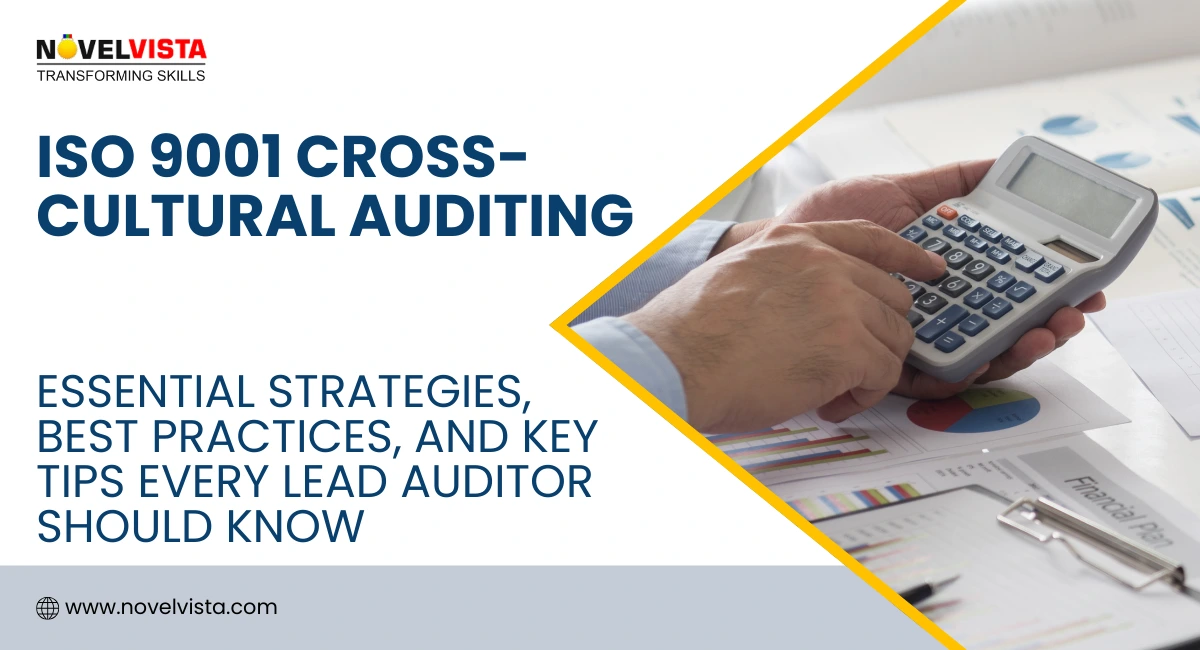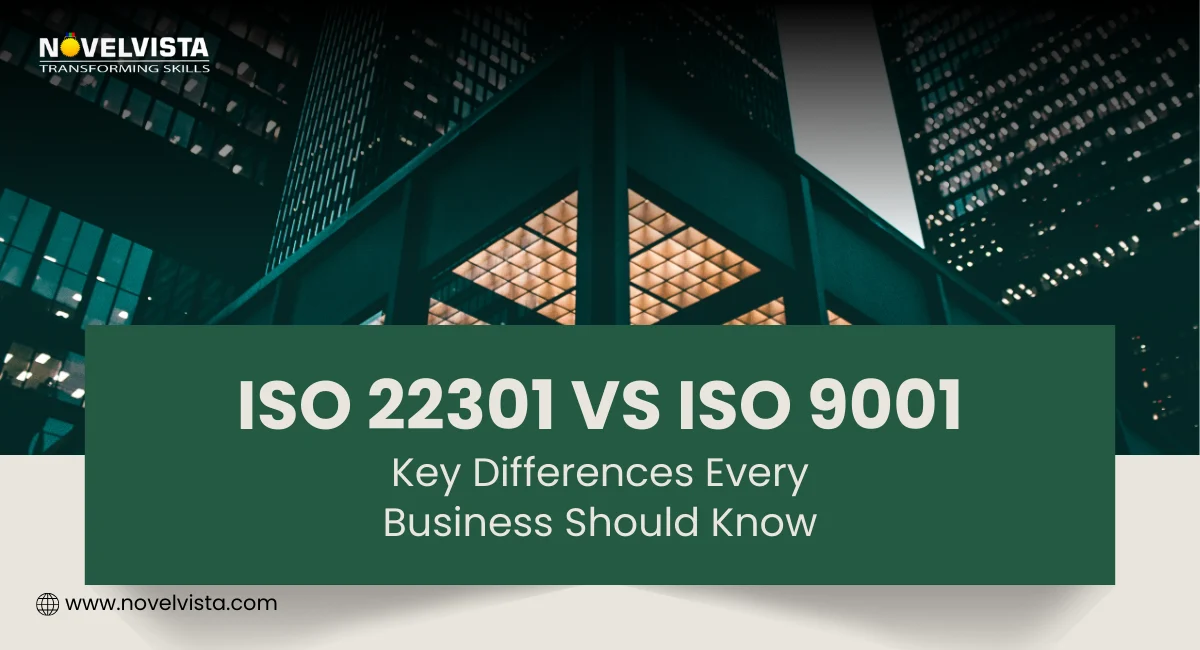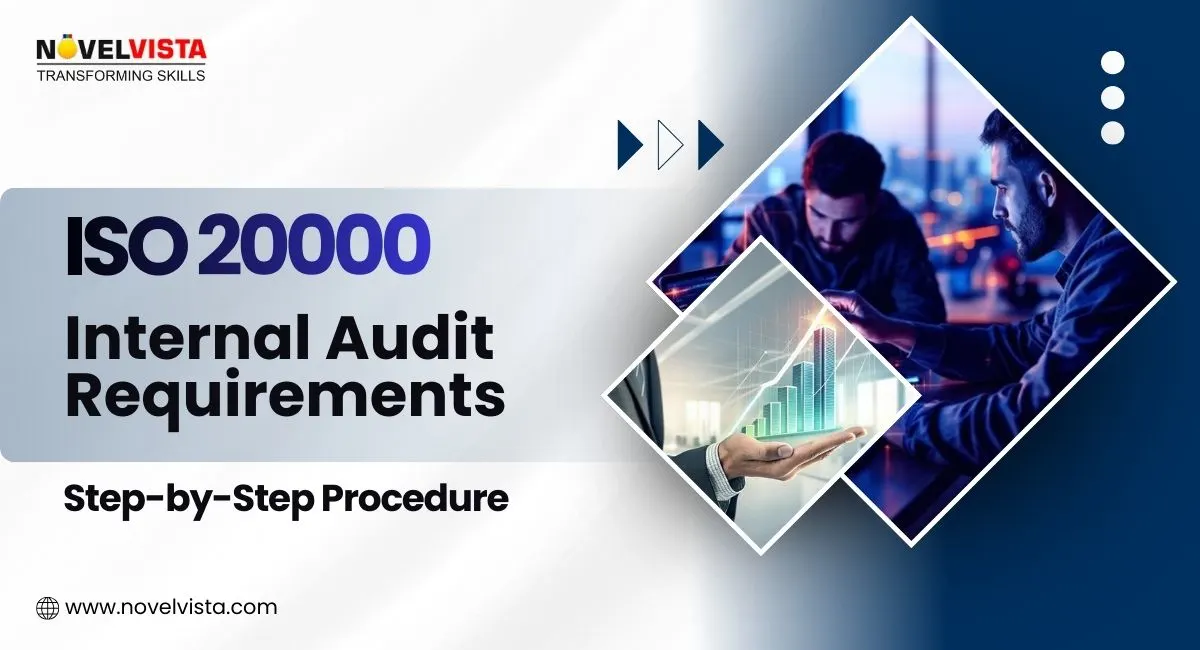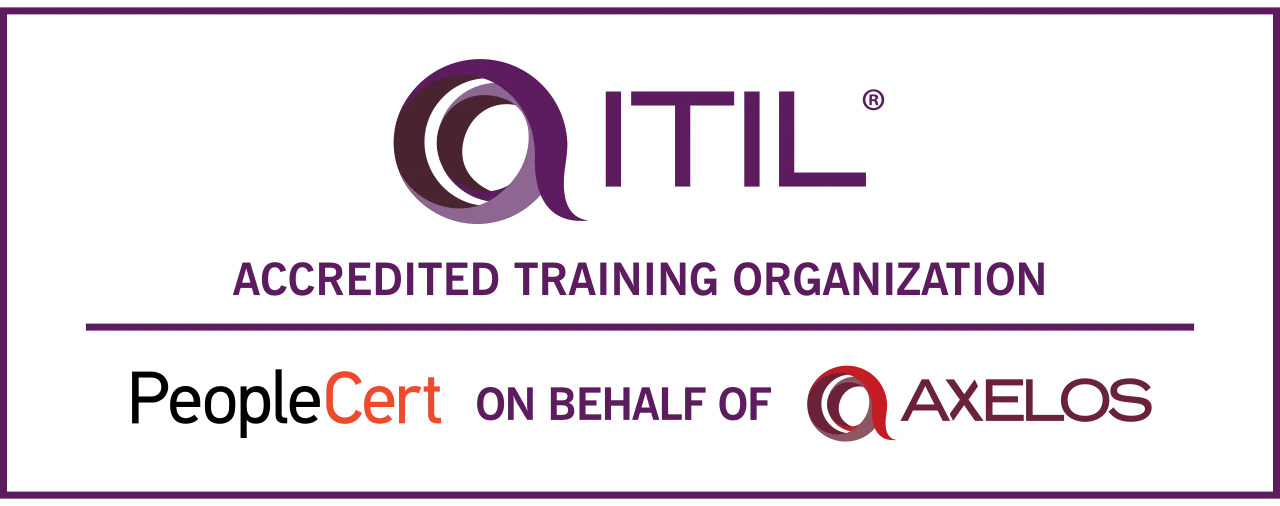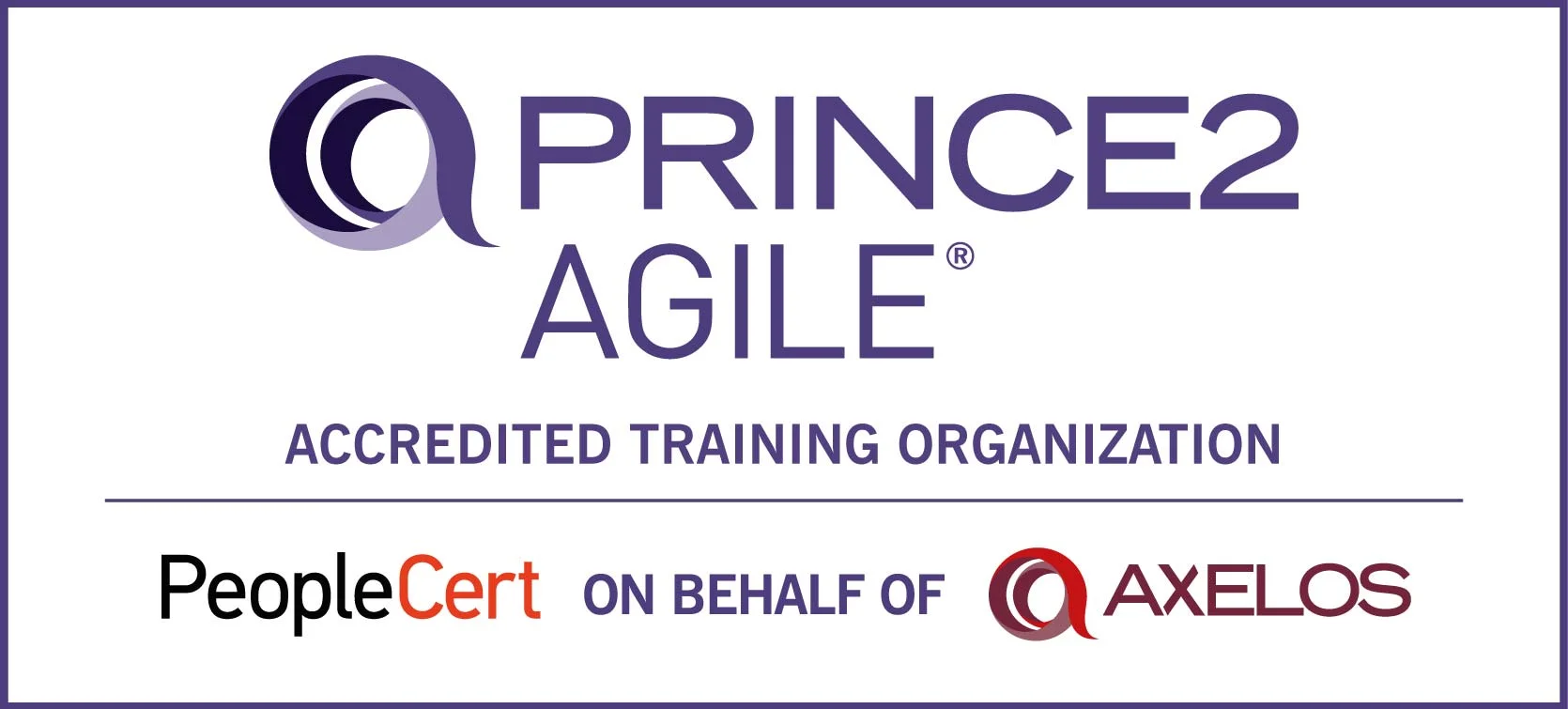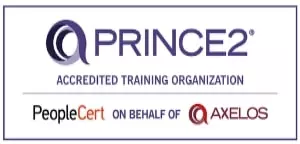- What Is ISO 9001? ISO 9001 Meaning Explained
- Key Principles of ISO 9001: The Foundation of Quality
- ISO 9001 Requirements: Clauses Simplified
- The Role of an ISO 9001 Lead Auditor
- How to Become an ISO 9001 Lead Auditor
- Benefits of Adopting ISO 9001
- ISO 9001 in the Modern Era: Future Trends
- Conclusion: What Is ISO 9001 Certification?
- Next Step:
What is ISO 9001, and why does it matter so much today? It is the international standard that defines how organizations build trust through quality, efficiency, and consistency. In 2026, with customer expectations higher than ever, companies certified in ISO 9001 stand out for their reliability, strong processes, and commitment to excellence.
At its core, ISO 9001 is a globally recognized framework for establishing and maintaining a Quality Management System (QMS). It ensures organizations deliver products and services that consistently meet customer and regulatory requirements. Major global organizations, from Toyota and Siemens to government agencies, rely on ISO 9001 to strengthen internal processes. According to the ISO Survey (2024), over 1.2 million certifications are active worldwide, confirming ISO 9001 as the most trusted quality benchmark in modern industries.
This guide explains what is ISO 9001, its principles, framework, and requirements, and how you can become an ISO 9001 Lead Auditor — the professional who ensures quality never takes a back seat.
What Is ISO 9001? ISO 9001 Meaning Explained
So, what is ISO 9001 exactly? What is ISO 9001 can be simplified as an international standard developed by the International Organization for Standardization (ISO) to define the structure of a robust Quality Management System (QMS).
Here’s the ISO 9001 meaning in simple terms: it’s a framework that ensures your organization delivers consistent quality, meets customer needs, and continuously improves.
Key Benefits of Understanding What Is ISO 9001:
- Establishes a framework: ISO 9001 lays out how to plan, control, and improve quality systematically.
- Ensures consistency: Organizations can maintain predictable results through standardized methods.
- Promotes continuous improvement: Processes are regularly reviewed and refined.
- Provides a blueprint: A structured approach for managing quality across all departments.
The ISO 9001 standard is applicable to organizations of any size, industry, or location. Whether you operate a manufacturing unit, IT firm, or healthcare organization, understanding what is ISO 9001 helps improve efficiency, reduce waste, and strengthen customer trust.
Currently, ISO 9001:2015 is the active version, emphasizing risk-based thinking, leadership commitment, and process integration. The upcoming ISO 9001:2026 revision is expected to introduce digitalization, sustainability, and resilience — keeping ISO 9001 more relevant than ever.
Read More: History of ISO 9001
Key Principles of ISO 9001: The Foundation of Quality
To grasp what is ISO 9001, it’s crucial to know its seven key principles — the foundation of quality management excellence. Each principle guides organizations in achieving consistent and effective quality outcomes:
- Customer Focus – Every process should aim to satisfy and retain customers.
- Leadership – Strong leadership sets direction, clarity, and unity.
- Engagement of People – Employees should be empowered and involved in quality goals.
- Process Approach – Treat every activity as part of an interconnected system.
- Improvement – Make continuous progress part of your culture.
- Evidence-Based Decision Making – Decisions should be guided by data.
- Relationship Management – Build long-term partnerships with stakeholders.
Expert Insight: Weak documentation control and lack of data-driven decisions are often the biggest improvement opportunities in audits. Addressing these areas significantly boosts compliance and operational efficiency.
ISO 9001 Quick Reference Checklist
Get a clause-by-clause guide to ISO 9001 implementation.
Simplify audits, avoid compliance gaps, and stay
certification-ready year-round.
ISO 9001 Requirements: Clauses Simplified
The ISO 9001 standard is structured into ten clauses. Clauses 4–10 form the core of QMS implementation:
- Clause 4 – Context of the Organization: Define internal/external factors, stakeholder needs, and QMS scope.
- Clause 5 – Leadership: Show top management commitment and communicate the quality policy.
- Clause 6 – Planning: Address risks, opportunities, and quality objectives.
- Clause 7 – Support: Ensure resources, competence, and communication.
- Clause 8 – Operation: Focus on controlled processes for delivering products/services.
- Clause 9 – Performance Evaluation: Monitor, measure, and review QMS effectiveness.
- Clause 10 – Improvement: Correct non-conformities and pursue continuous enhancement.
Understanding these clauses is the first step toward achieving ISO 9001 certification, as auditors evaluate compliance based on these requirements. Each clause builds upon the previous one, starting from understanding the organization’s context to driving continual improvement. Together, they create a structured framework that supports customer satisfaction, regulatory compliance, and operational excellence.
The Role of an ISO 9001 Lead Auditor
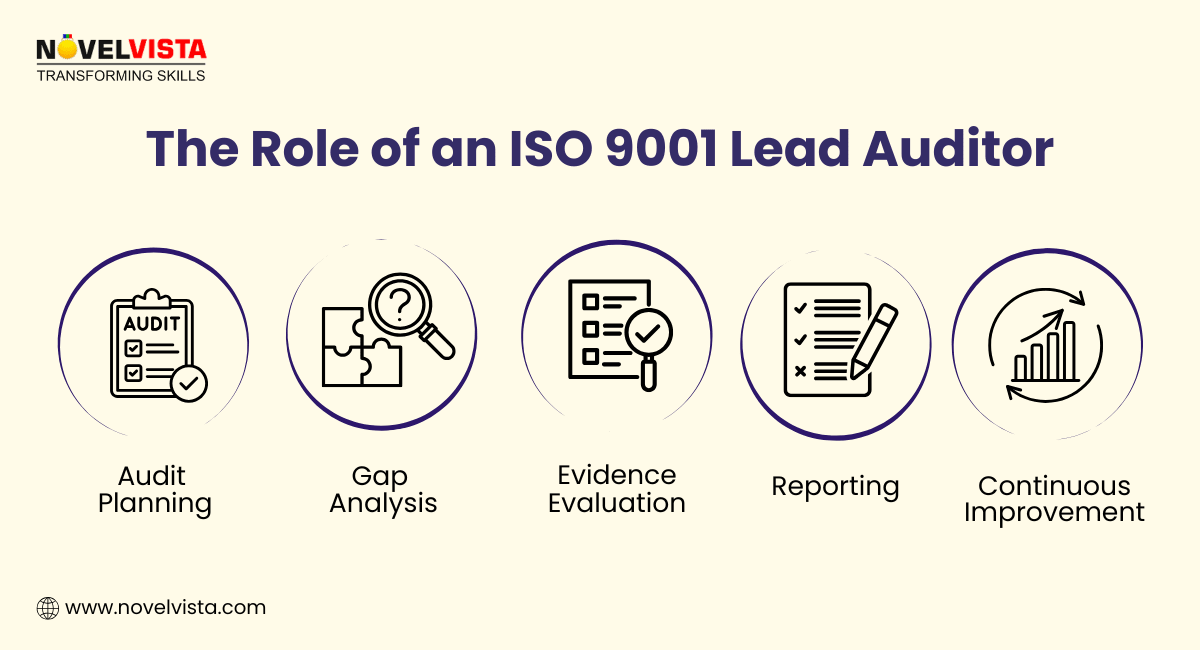
An ISO 9001 Lead Auditor is more than just a compliance checker — they’re a quality strategist, ensuring that every process aligns with the organization’s QMS goals and the ISO 9001 standard. Their role is critical in verifying whether systems truly reflect the intent of the standard or merely exist on paper.
Key Responsibilities:
- Audit Planning & Execution: Lead Auditors design and manage the entire audit process, from planning and scheduling to conducting on-site or remote audits.
- Gap Analysis: They identify areas where current processes fall short of ISO 9001 requirements.
- Evidence Evaluation: Through interviews, documentation reviews, and process observation, they determine compliance accuracy.
- Reporting & Recommendations: After each audit, they prepare detailed reports highlighting non-conformities, risks, and opportunities for improvement.
- Continuous Improvement Guidance: They provide actionable insights to help organizations enhance quality performance.
For professionals, becoming a Lead Auditor opens doors to consultancy, compliance leadership, and global career opportunities. They play a pivotal role in helping businesses achieve and maintain ISO 9001 certification — serving as the bridge between quality goals and real-world results.
How to Become an ISO 9001 Lead Auditor
Interested in becoming a Lead Auditor? The journey involves structured learning, practical exposure, and accredited certification. Here’s a simple breakdown:
- Meet the Prerequisites: Candidates should have basic knowledge of quality management concepts and ideally some experience in internal auditing or process management.
- Complete ISO 9001 Lead Auditor Training: Enroll in an accredited course (such as NovelVista’s ISO 9001 lead auditor certification course) that covers ISO 9001 principles, audit planning, execution, reporting, and follow-up.
- Pass the Examination: The course concludes with a written or online exam to assess your understanding of ISO 9001 requirements and auditing techniques.
- Gain Practical Experience: Participate in internal audits or as an observer in certified audits to build real-world expertise.
- Apply for Lead Auditor Certification: Upon meeting education and experience requirements, you can apply for certification through recognized bodies.
Once certified, Lead Auditors can conduct first-party (internal), second-party (supplier), and third-party (certification) audits. They become key players in driving transparency, efficiency, and trust across industries.
Benefits of Adopting ISO 9001
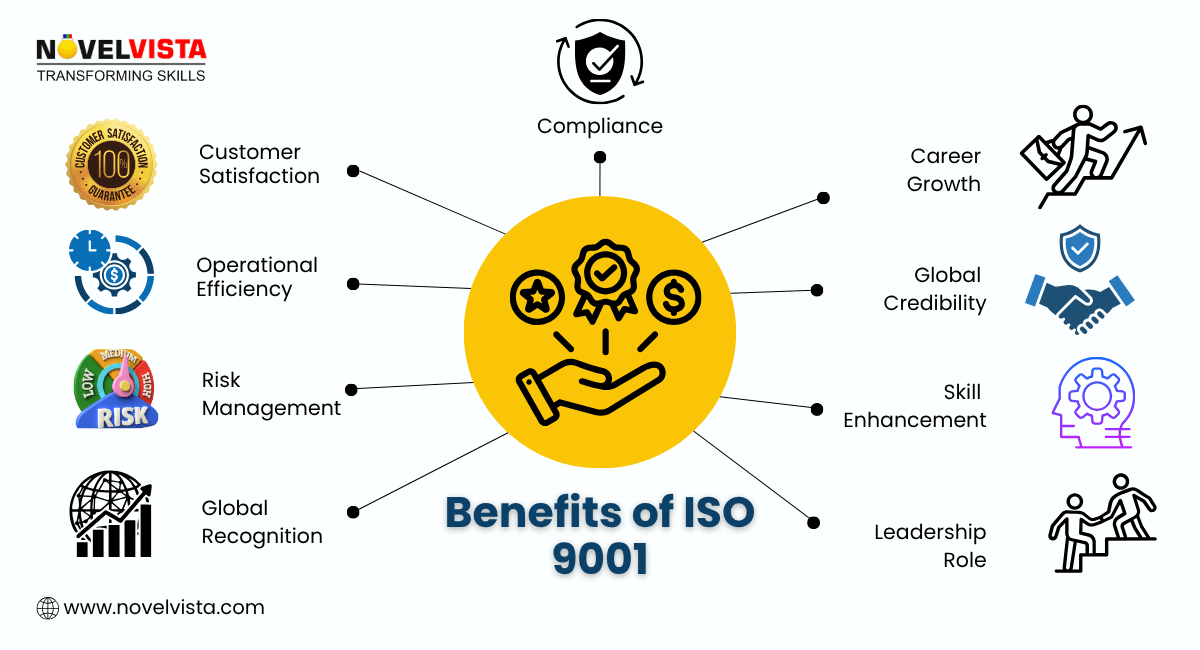
Why should organizations invest time and resources in ISO 9001? The answer is simple — it delivers measurable business impact. Here are the major benefits explained briefly but clearly:
- Customer Satisfaction: Consistent quality and process reliability directly enhance customer trust and loyalty.
- Operational Efficiency: Streamlined procedures reduce waste, rework, and redundancy.
- Global Recognition: ISO 9001 certification strengthens brand credibility and helps organizations compete internationally.
- Risk Management: Encourages proactive identification and mitigation of operational risks.
- Employee Engagement: Involves teams in improvement, creating a culture of ownership and accountability.
- Regulatory Compliance: Ensures adherence to industry laws, regulations, and contractual requirements.
- Continuous Improvement: Drives systematic reviews and data-based decision-making for long-term success.
For professionals, especially Lead Auditors, the adoption of ISO 9001 means career growth, international exposure, and the satisfaction of enabling organizational excellence.
Read More: Benefits of ISO 9001
ISO 9001 in the Modern Era: Future Trends
ISO 9001 is evolving to match the pace of global transformation. The upcoming ISO 9001:2026 revision emphasizes digital integration, sustainability, and organizational resilience. Let’s look at what’s shaping the future:
- Digital Transformation: Organizations are adopting AI, automation, and data analytics to make quality systems smarter and more predictive.
- Sustainability Focus: The next revision aligns quality management with environmental and social governance (ESG) goals.
- Risk-Based Thinking 2.0: Enhanced emphasis on proactive risk prediction using real-time data.
- Remote Auditing: Post-pandemic flexibility now allows hybrid and digital audit processes.
- Integration with Other Standards: ISO 9001 is increasingly harmonized with ISO 14001 (environment), ISO 27001 (information security), and ISO 45001 (occupational safety).
For organizations, these trends mean adaptability, efficiency, and long-term relevance. For auditors, it means staying current with digital tools, emerging risks, and evolving expectations.
Conclusion: What Is ISO 9001 Certification?
It’s more than a certificate — it’s a culture of precision, reliability, and customer focus. Organizations adopting ISO 9001 turn quality management into a competitive advantage, while professionals like Lead Auditors gain meaningful careers driving improvement and excellence.
For businesses, adopting ISO 9001 transforms quality management from an obligation into a competitive advantage. It ensures that products, services, and customer experiences are not just consistent but exceptional.
For professionals, especially ISO 9001 Lead Auditors, this framework provides a meaningful career path where every audit drives improvement and every recommendation fuels growth.
In 2026 and beyond, ISO 9001 continues to serve as the cornerstone of quality management, guiding organizations and professionals toward operational mastery and exceptional customer experiences.
Next Step:
Take your career to the next level with NovelVista’s ISO 9001 Lead Auditor Certification Training Course. Gain in-depth knowledge of ISO 9001 principles, auditing techniques, and real-world applications to drive organizational excellence.
Whether you’re aiming to lead audits, improve processes, or enhance compliance, this course equips you with the skills and certification needed for global recognition. Enroll today and become a trusted ISO 9001 Lead Auditor.
Frequently Asked Questions
Author Details

Mr.Vikas Sharma
Principal Consultant
I am an Accredited ITIL, ITIL 4, ITIL 4 DITS, ITIL® 4 Strategic Leader, Certified SAFe Practice Consultant , SIAM Professional, PRINCE2 AGILE, Six Sigma Black Belt Trainer with more than 20 years of Industry experience. Working as SIAM consultant managing end-to-end accountability for the performance and delivery of IT services to the users and coordinating delivery, integration, and interoperability across multiple services and suppliers. Trained more than 10000+ participants under various ITSM, Agile & Project Management frameworks like ITIL, SAFe, SIAM, VeriSM, and PRINCE2, Scrum, DevOps, Cloud, etc.
Course Related To This blog
ISO 9001:2015 Lead Auditor Training and Certification
Confused About Certification?
Get Free Consultation Call

